

Beidaihe with WildWings – 3rd to 20th May 2001
Beidaihe is one of those places that any birder simply has to visit. It has become famous in spring for the excellent passage of birds, notably passerine but also raptors. Coupled with a visit to Happy Island and Old Peak, surely there is no better way to gain experience of those Eastern Palearctic migrants that tantalise North American and Western European birders – images of White’s and Siberian Thrushes, Lanceolated Warblers, and Lesser (Mongolian) Sandplover are amongst many conjured up.
The reputation of the WildWings trip proceeds it: offering a relaxed style of leadership, in May 2001 it was Tony Marr and Dave Fell - knowledgeable, good-humoured and excellent company; the cost is kept low (£1059.00 - though there are extras such as food, visa, trips to Happy Island, Old Peak, etc. – in total I would say the trip cost £1400.00); the organisation in China is all taken care of (accommodation, transport, food); but most importantly it offers the individual or small group the flexibility to go their own way and find their own birds. So, with the added incentive (as if I needed any) of having to start my research for the illustrations for a new guide to the birds of China, I visited Beidaihe with WildWings this May.
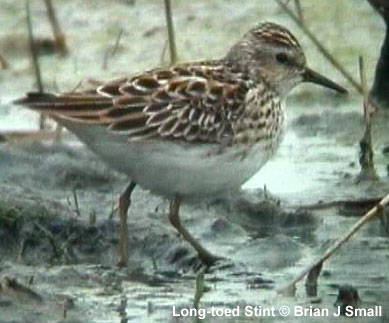 Linking up with Ken Arber, Graham Etherington and Paul Callaway (part of a group of 25, including Simon Fogg, Martin Pitt, Peter Colston, Marion Barlow and Steve Holmes), the trip was to prove a huge success, not only for the birds, but for the fantastic fun had whilst seeing them – I doubt if so many birds have been flushed due to the hoots of laughter emanating from us. We laughed and we cried, but eventually saw c.230 species (the group as a whole seeing over 245), with incredible highlights such as the first Black Baza for Beidaihe, c15000 Pacific Swifts passing in two hours on 8th May (one of us saw four White-throated Needletails), 60 White’s Thrushes in one day, etc., etc.. All of us got to grips with all of our ‘most wanted’, with the exception perhaps of Pallas’s Grasshopper Warbler.
Linking up with Ken Arber, Graham Etherington and Paul Callaway (part of a group of 25, including Simon Fogg, Martin Pitt, Peter Colston, Marion Barlow and Steve Holmes), the trip was to prove a huge success, not only for the birds, but for the fantastic fun had whilst seeing them – I doubt if so many birds have been flushed due to the hoots of laughter emanating from us. We laughed and we cried, but eventually saw c.230 species (the group as a whole seeing over 245), with incredible highlights such as the first Black Baza for Beidaihe, c15000 Pacific Swifts passing in two hours on 8th May (one of us saw four White-throated Needletails), 60 White’s Thrushes in one day, etc., etc.. All of us got to grips with all of our ‘most wanted’, with the exception perhaps of Pallas’s Grasshopper Warbler.
BASIC ITINERARY
The basic itinerary is designed to give a gentle introduction, plus see some of the sights in and around Beijing, then to transfer to Beidaihe for the rest of the stay. From our base at Beidaihe, we were to then make a number of journeys to the Great Wall, Happy Island and Old Peak (five nights away in total). You then return to Beijing for one night before returning home.
3rd and 4th May – Flights from around the UK to Amsterdam, gathered the group together before the flight by KLM to Beijing. Some, a very select few, were up-graded to more luxurious accommodation befitting their status (Tony and Dave were left in tourist class, of course). The eight hour flight to Beijing allowed views over a very frozen Lake Baikal, Mongolia and Ulan Bator (a few tin shacks and a herd of sheep – I exaggerate of course…there might have been a horse as well), then northern China (Inner Mongolia). We landed in Beijing, with the air dirty with dust out of the Gobi Desert. The ritual form-filling and Olympic-standard staring at the airport over, we transferred to our hotel. After a brief rest we visited Tiananmen Square, the Emperor’s Palace, then a small park near the hotel, picking up a few of the local habits and common species in the process. For me the highlights in Yuyuantang park were getting to grips with the first of many Taiga Flycatchers, Eastern Crowned Warbler, and Dusky Thrush.
5th May – An early start to beat the crowds at the Summer Palace – it was to be one of many very sunny days – then we drove to the Fragrant Hills – going up by chairlift then walking down late afternoon. The crowds at the Summer Palace built up during the morning, but I will always remember the large numbers of singing Pallas’s, Yellow-browed, Radde’s and Dusky Warblers, plus Pied Harrier, many Olive-backed Pipits and Amur Falcons. We arrived at the Fragrant Hills at the time of day when all goes quiet, though we got our first Daurian Redstart, Chinese Hill Warbler, Pere David’s Laughingthrush (an instantly forgettable bird) and an adult Daurian Jackdaw.
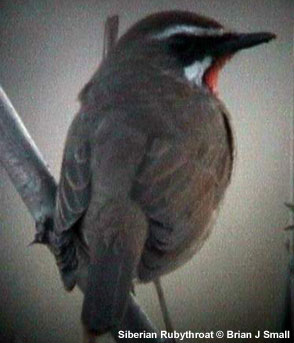 6th May – Another early start, but one filled with anticipation: we were to catch the three hour express train to Beidaihe. One of the many bizarre incidents of the trip followed at Beijing Station, where stinky Graham had one of his anti-perspirants confiscated: his bag was scanned, one can had a flame symbol on it – in the middle of the station they proved it was flammable by lighting the gas, and they confiscated it; in the meantime all of the bags had been scanned whilst nobody watched the screen. We all felt very humbled by the extremely efficient, observant and conscientious security, then laughed all the way to the train (Graham had to make do with just one deodorant for the rest of the trip, which I suspect was unused on his return).
6th May – Another early start, but one filled with anticipation: we were to catch the three hour express train to Beidaihe. One of the many bizarre incidents of the trip followed at Beijing Station, where stinky Graham had one of his anti-perspirants confiscated: his bag was scanned, one can had a flame symbol on it – in the middle of the station they proved it was flammable by lighting the gas, and they confiscated it; in the meantime all of the bags had been scanned whilst nobody watched the screen. We all felt very humbled by the extremely efficient, observant and conscientious security, then laughed all the way to the train (Graham had to make do with just one deodorant for the rest of the trip, which I suspect was unused on his return).
At Beidaihe, we arrived to the only real rain of the trip and a really good fall of migrants. In the vicinity of the Jin Shan hotel, there were an estimated 2000 Yellow-browed and 1000 Pallas’s Warblers, plus Dusky and Radde’s Warblers on every open patch of ground or in every small bush. Our first Siberian Rubythroats and Blue Robins followed quickly, as did Black-faced and Pallas’s Reed Buntings, and many Chinese Penduline Tits. The ‘gang’ cycled out to the sand flats where a Chinese Egret was hanging out with the local Little Egrets, but also here the fall was very good with 300 Siberian Stonechats (with an amazing variety of plumages – some with dark rumps) in the small reed bed, male and female Citrine Wagtails of the race calcarata, and many Yellow-breasted, Little, Chestnut-eared and Siberian Meadow Buntings in a small patch of ploughed land near the sand flats wood. Beidaihe had not let us down, but would it live up to this first afternoon?
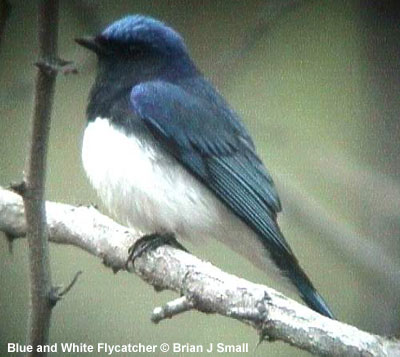 7th May – Early morning around the hotel, then most of the day near the reservoir, wader pools, woods, sand flat woods and the large grass ‘park’ at the centre of town. The previous day’s species were all still present though perhaps in reduced numbers. Graham found a Red-flanked Bluetail, which was good to get because they go through early, but bird of the morning was an adrenalin-pumping White-throated Needletail seen by me, on my own and so hard (okay not too hard) to enjoy when the rest of the group hadn’t got it. Yellow-browed Bunting and Chinese Song Thrush in Legation Gully were also smart. At the reservoir, wader pools and Radar marsh we had a quiet spell, and this was exacerbated when we met Tony’s group who had just been watching a male Blue-and-white Flycatcher. A mad cycle ride and search of the site produced great views of a superb bird. On the return to the hotel we passed a large open park in the centre of town, where a sizeable group of Yellow Wagtails of the races simillima and macronyx had drawn in six Red-throated Pipits and a cracking Blyth’s Pipit.
7th May – Early morning around the hotel, then most of the day near the reservoir, wader pools, woods, sand flat woods and the large grass ‘park’ at the centre of town. The previous day’s species were all still present though perhaps in reduced numbers. Graham found a Red-flanked Bluetail, which was good to get because they go through early, but bird of the morning was an adrenalin-pumping White-throated Needletail seen by me, on my own and so hard (okay not too hard) to enjoy when the rest of the group hadn’t got it. Yellow-browed Bunting and Chinese Song Thrush in Legation Gully were also smart. At the reservoir, wader pools and Radar marsh we had a quiet spell, and this was exacerbated when we met Tony’s group who had just been watching a male Blue-and-white Flycatcher. A mad cycle ride and search of the site produced great views of a superb bird. On the return to the hotel we passed a large open park in the centre of town, where a sizeable group of Yellow Wagtails of the races simillima and macronyx had drawn in six Red-throated Pipits and a cracking Blyth’s Pipit.
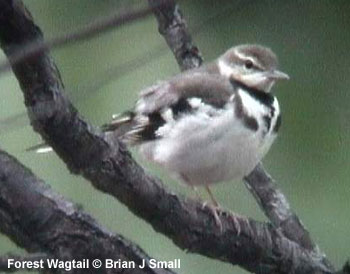 8th May – The mere facts of the usual routine of early morning in or around the Jin Shan hotel (where Graham astonishingly found an Oriental Scops Owl which was almost impossible to see even when you knew it was there), then by bike to reservoir, hide the reality of this being one of those fantastic days. It was a cool northerly breeze, with the threat of rain, which arrived, albeit quite light, at c.1300hrs We had some luck and missed virtually nothing: 15,000 Pacific Swifts in two hours, Asian House Martin, Siberian Thrush, Blue Robins and Rubythroats galore, Forest Wagtail (waving its chest like Britney Spears), Mugimaki Flycatcher, White-throated Needletail, etc., then 2, 500 White-winged Scoter on the sea, are some of the highlights. Others being Black Stork, our first Long-toed Stint, Sharp-tailed Sandpiper, Grey-headed Lapwing, another Needletail (again by me only a reputation was building here), taivana Yellow Wagtail (good birds), four Temminck’s Stints, Japanese Reed Buntings……..
8th May – The mere facts of the usual routine of early morning in or around the Jin Shan hotel (where Graham astonishingly found an Oriental Scops Owl which was almost impossible to see even when you knew it was there), then by bike to reservoir, hide the reality of this being one of those fantastic days. It was a cool northerly breeze, with the threat of rain, which arrived, albeit quite light, at c.1300hrs We had some luck and missed virtually nothing: 15,000 Pacific Swifts in two hours, Asian House Martin, Siberian Thrush, Blue Robins and Rubythroats galore, Forest Wagtail (waving its chest like Britney Spears), Mugimaki Flycatcher, White-throated Needletail, etc., then 2, 500 White-winged Scoter on the sea, are some of the highlights. Others being Black Stork, our first Long-toed Stint, Sharp-tailed Sandpiper, Grey-headed Lapwing, another Needletail (again by me only a reputation was building here), taivana Yellow Wagtail (good birds), four Temminck’s Stints, Japanese Reed Buntings……..
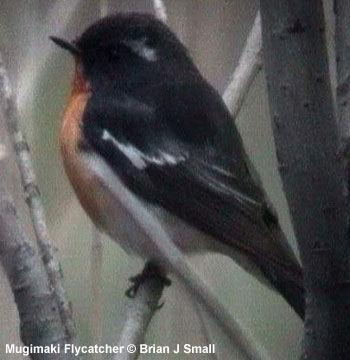 Back at Beidaihe the astonishing site of over 2500 White-winged Scoter in the bay off Lighthouse Point (perhaps as many as 4000) was difficult to comprehend; a male Chestnut Bunting was incredibly elusive – competing with Black-faced for the most secretive bunting.
Back at Beidaihe the astonishing site of over 2500 White-winged Scoter in the bay off Lighthouse Point (perhaps as many as 4000) was difficult to comprehend; a male Chestnut Bunting was incredibly elusive – competing with Black-faced for the most secretive bunting.